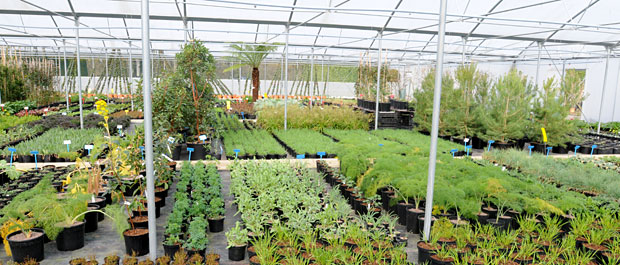
Jordan isn’t the first place you would think of if you had to come up with a country with a similar climate to Hampshire. For a start it’s a lot hotter and drier. That makes many of the native plants there very unlikely to turn up in Hook, but that is where a few thousand will be in the weeks before the prestigious Chelsea Flower Show.
Specialist nursery Hortus Loci are growing plants for Hugo Bugg’s Royal Bank of Canada Garden. Inspired by his recent trip to Jordan, the planting palette is influenced by the plants found in the endangered dry Mediterranean pine habitat, Dibeen. The plants will illustrate how arid landscapes can still have beautiful flora yet requiring minimal rainfall.
It will be a dynamic and sculptural garden grounded in a symbolic and fundamental geometry and will be viewed from a distance, instilling an aura around the sacred body of water within the centre of the garden. The garden is intended to inspire visitors through innovative materials, compelling design and beautiful planting all aimed to help increase awareness and appreciation of water.
The concept and plant list for this 2016 garden has been in production for over 2 years with Hugo spending many hours on field trips in Jordan identifying plants suitable for this unique garden and a botanical garden he is designing for the Jordanian royal family. Many of the Mediterranean plants are not widely known and not even commercially available. A mix of warm coloured flowers and silver grey foliage will stand out with vibrancy from the dark fabric backdrop.
The list for Hugo’s garden was a challenge for the team at Hortus Loci to say the least! Out of around 150 plants, they recognised just one – and that wasn’t one that flowered.
“It was the most difficult list I’d ever seen” said Mark Straver, Director at Hortus Loci – “It’s really pushing us out of our comfort zone.”
It wasn’t possible to grow all of the plants on the original list though. Michael Buck, General Manager said: “we needed to find plants native to Jordan but which would grow well here. We need 7,000 – 8,000 plants for Hugo to choose from.”
The team consulted with Marina Christopher of Phoenix Perennial Plants in Alton to come up with a revised list.
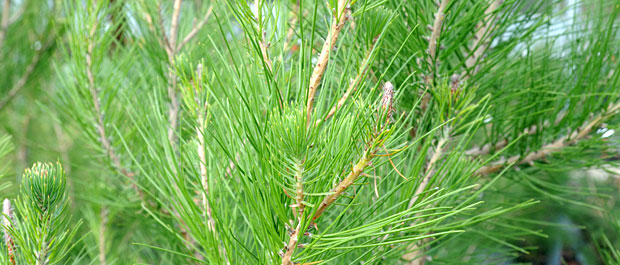
Pinus halepensis is a key plant for Hugo. Commonly known as the Aleppo pine, the bark is orange-red, thick, and deeply fissured at the base of the trunk. The needles are very slender, long and a beautiful yellowish green. “We eventually found his pines in a field between Valencia and Madrid” said Mark. “They won’t tolerate any cold weather so they need to stay in Spain for as long as possible.”
“The most difficult plant we have been trying to get is arbutus andrachnoides (hybrid strawberry tree) – they are almost impossible to find.” It is a large bushy evergreen shrub with an attractive peeling cinnamon-brown trunk and branches. Leaves are glossy dark green and the flowers are small white and cluster-forming. Fruits are small and orange-red. “We have got 40 but from all over the place. They have a stunning bark.”
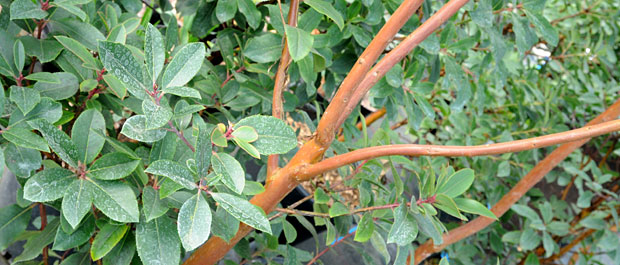
The shrubs are coming from Sicily. Michael said “We spent 3 days there and they are coming over to the UK in the next few weeks. They need to look slightly tough looking to suit the garden so we had to ask that they weren’t trimmed.”
If you’re doing a landscape in Jordan it’s not going to be all lush so you need a whole range of small plants too and it’s difficult growing small plants that are supposed to look slightly scrubby. The garden is sure to look out of the ordinary.
“It’s nice to have a garden showing something different” said Jamie Butterworth, Joint ShowPlant Manager.
“It’s very exciting – it could blow everyone out of the water “said Mark.
It’s not just Hugo’s plants growing in the giant greenhouses at Hortus Loci. Vaccinium myrtillus is a species of shrub with edible blue fruit, also known as “whortleberry” or European blueberry. They are being grown for Cleve West and Sam Ovens. These are special because they have come direct from Sweden and have been grown in Hampshire for the last 8 months. “They are very slow growing and take a while to establish” said Michael. “These can be found across northern Europe, including our very own New Forest. I believe that these have not been showcased at Chelsea before.”
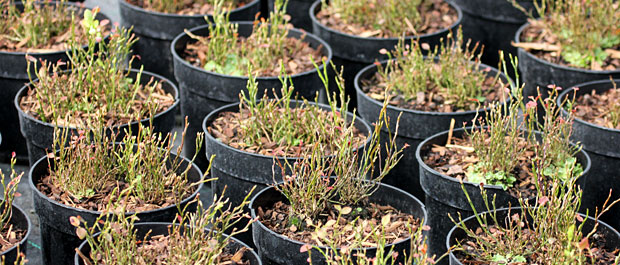
The team are looking forward to seeing Cleve’s finished garden too. “The attention to detail on Cleve’s garden will be amazing as it always is. We’ve grown a lot of woodlanders we’ve not grown before ,” said Mark.
“It’s a really nice mix of things that would normally be classed as weeds and then some of the best woodland perennials you’ve ever seen,” added Jamie.
Key plants for Cleve include Downy Oak (Quercus pubescens), Honeysuckle (Lonicera periclymenum), Highbush Blueberry (Vaccinium corymbosum), Whortleberry (Vaccinium myrtillus), Golden Columbine (Aquilegia chrysantha), Brook Thistle (Cirsium atropurpureum), Mountain Cranesbill (Geranium pyrenaicum Bill Wallis), Siberian Flag (Iris sibirica) and Wild Strawberry (Fragaria vesca).
The Vaccinium corymbosum is particularly lovely. “They are amazing. They are about 30 years old and the most expensive blueberries I’ve ever bought” said Mark. They have twisted, peeling stems in winter; profuse white or pink flowers in spring; blue berries in summer; and long-lasting red foliage in autumn.
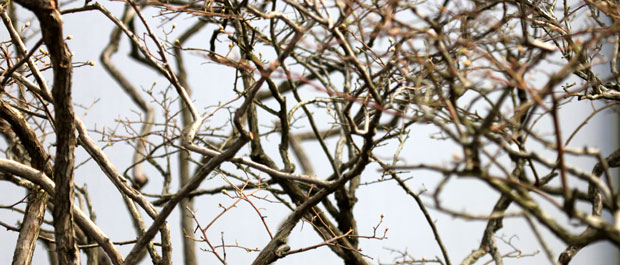
The oak trees came from a botanical garden in France and they spent a few years in a nursery in Belgium too. The well-travelled trees were selected for Cleve in January 2015.
Hortus Loci have a history of growing for many top designers and the same is true this year with Hugo Bugg, Cleve West, Sam Ovens and Ann-Marie Powell.
Without a doubt, the plants are going to be showstoppers! We’ll be giving an update in May so keep an out for our show report.